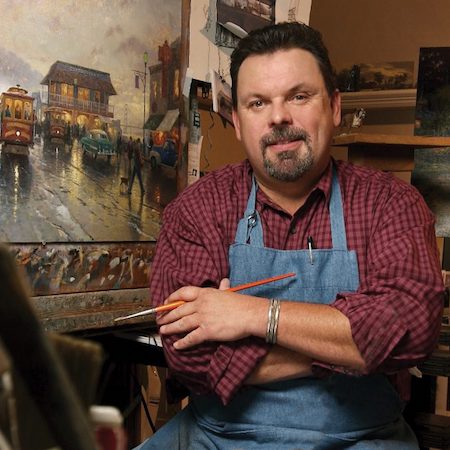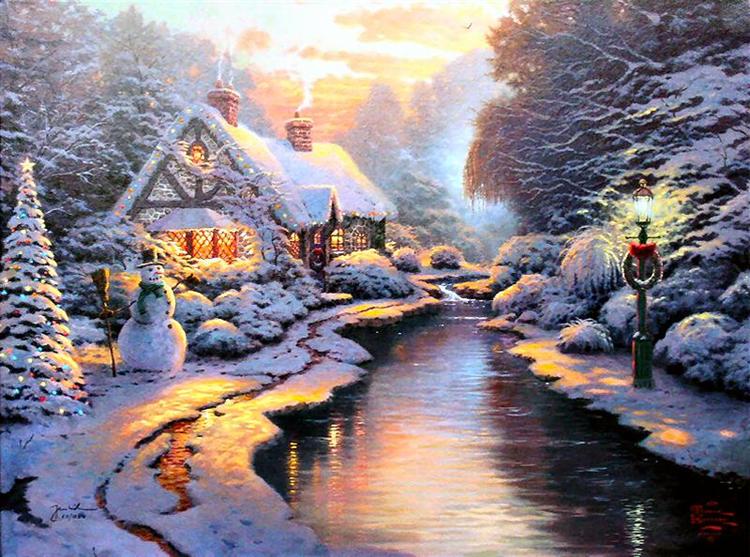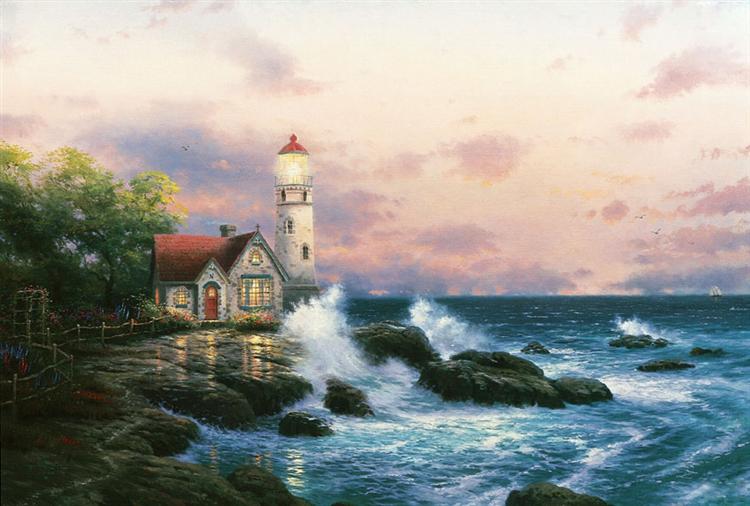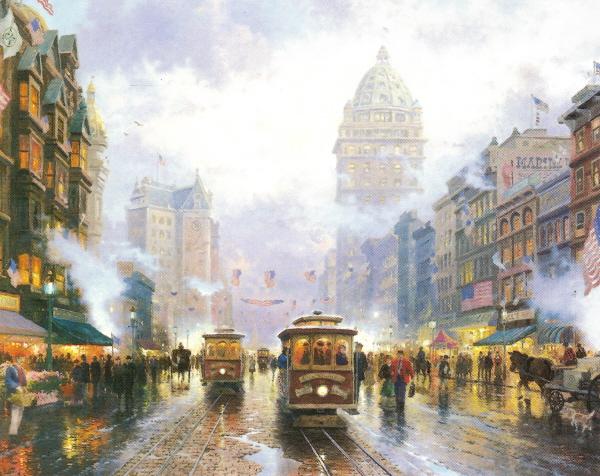Who Was Thomas Kinkade’s Niche?
Episode #5 of the course How do artists find their niche? by Ann Rea
Thomas Kinkade was an American painter of popular realistic, pastoral, and idyllic subjects.
Kinkade referred to himself as The Painter of Light®, and he trademarked the phrase. This phrase was “borrowed” from the British master J. M. W. Turner, who was the originally dubbed “Painter of Light.”
We’ll determine Kinkade’s niche by answering the following four questions:
1. Why = Who is the artist, what did he stand for, what did he stand against, and why?
Thomas Kinkade proclaimed he was a born-again Christian who expressed conservative American family values in his sentimental paintings.

Thomas Kinkade
The current art establishment doesn’t take the expression of popular American religious beliefs seriously, and they do not accommodate artists who create art that isn’t priced for the luxury market.
At his peak, Kinkade generated $130 million in annual sales through a network of 350 franchised Kinkade art galleries strategically located in shopping malls. His corporation was listed on the New York Stock Exchange.
Kinkade Gallery franchise owners accused Kinkade of using Christianity as a tool to take advantage of them by presenting the franchise as a religious opportunity.
Disgruntled gallery franchise owners filed several lawsuits claiming that he sold them overvalued inventory. This forced him to delist his company from the exchange so that he could regain control to mount a more effective legal defense.
Despite the “family values” and ideals that he espoused, he died of a drug and alcohol overdose while with his mistress.
Ironically, it was Kinkade’s values that led to the closure of many Kinkade galleries and the rapid decline in value of his reproductions.
2. What = Based on his why, what was the one problem that he believed was worth solving?
For most conservative middle-class Americans, modern art museum collections are not relatable, and the art does not affirm their values.
Kinkade believed that conservative family values should be expressed in art and made accessible to middle-class Americans.
3. How = How did he solve this problem using his artistic and other skills and resources?
Kinkade’s target market tends to interpret meaning in a literal way.
Knowing this, he painted hearts throughout his paintings to symbolize the sanctity of marriage and plentiful images of light as references to the light of Jesus Christ.
He secured many lucrative licensing deals and printed affordable reproductions, making his art accessible to a large population of middle-class Americans.

Christmas Evening by Thomas Kinkade

Beacon Of Hope by Thomas Kinkade

San Francisco, Market Street by Thomas Kinkade
Thomas Kinkade established many lucrative licensing deals, such as a license to La-Z-Boy® to embroider his images on the back of their chairs and a residential real estate development in Vallejo, California to display his name.
It’s estimated that one in every 20 American households owns a copy of one of his paintings.
4. Who = Who had the one problem that he believed was worth solving?
Who else wants to express and to celebrate conservative “family values”?
Those who are not inclined to appreciate the contemporary art scene or who are unable to afford its offerings: conservative middle-class Americans.
Share with friends

